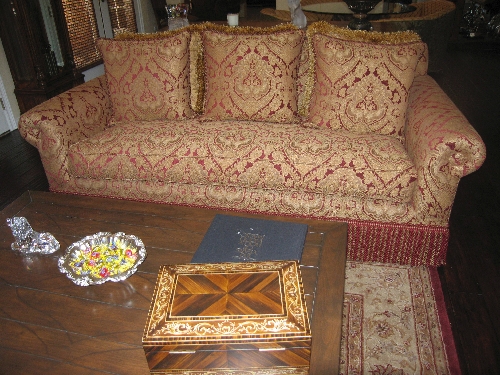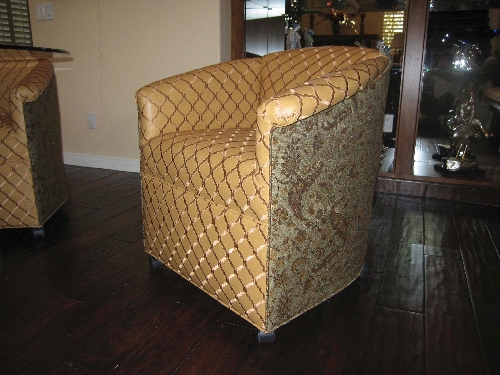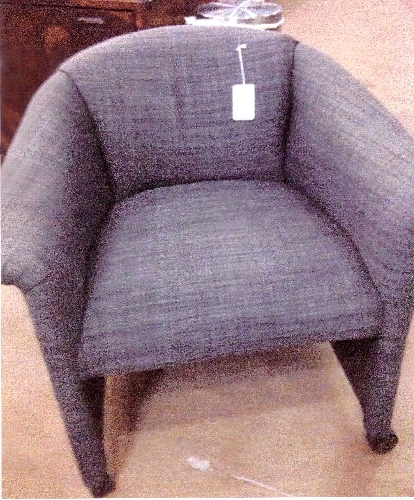Reupholstering quality furniture makes ‘cents’




Living in England as a student and traveling to other countries in Europe always left me marveling at the wonderful history and architecture found in these “older” countries, the respect shown for styles from the past and the great lengths they’d go to in order to restore and preserve beautiful buildings and furniture.
By and large the people weren’t considered as rich as those in America, and maybe that’s what accounted for their unwillingness to simply toss out the old and bring in the new. No, they much preferred to restore rather than to tear down, to refurbish rather than demolish. It’s a good thing too as the contemporary design that replaced it was often mundane, to say the least, if not downright ugly.
Little by little, craftsmanship and quality have become compromised as machinery has taken the place of man and life has become increasingly complex and harder to navigate. At the same time, the economy of the entire world is questionable at best. And so now we too, here in America, are slowly but surely coming to the realization that there’s great worth in renewing and using restored buildings and furnishings that would no doubt have once been tossed aside. It not only makes good economic sense, but assures us of better quality products in the long run while helping the environment as well.
I’ve noticed more and more of my clients willing and eager to refinish and reupholster existing furnishings, provided they still suit their current taste and interior design style and are of sufficient quality to warrant further investment. And I’ve encouraged them all the way in this pursuit, and with good reason(s).
Buying new furniture these days can often be a risky business. The consumer is often fooled and taken in by a flashy exterior fabric and/or style, but has little, if any, knowledge of what’s going on behind the scene. Most people just don’t give a thought to the kind of construction that has gone into the manufacturing of the chair or sofa as long as it looks good. And that’s a fundamental mistake.
I’ve seen what passes for frames and cushions, usually coming from Asia, that need to be completely replaced – and it’s nothing less than shocking. Alder hardwood frames and eight-way hand-tied springs now seem to be things of the past. They have been replaced with flimsy, cheap materials, and pieces of this and that are now often used for stuffing in the mass production of today’s furniture. They might look grand in the showroom, but they’ll never stand the test of time that older furniture has and are a poor investment for your hard-earned dollars.
For those unfamiliar with the reupholstery process, it really isn’t brain science. But, the results are usually quite brilliant nonetheless. Covering and filling is removed down to the bare bone frame. The frame and springs are inspected and repaired or replaced as needed. If necessary, springs are rewebbed and retied. And, of course, new quality filling, such as down, Dacron, foam or even a combination of these materials is used in the process.
If you have older furniture, it was likely built back in a time when craftsmen still had pride in what they were doing. It can probably be said that the older the furniture the better, because to purchase similar construction and craftsmanship on new pieces would probably cost two to three and even four times as much. This may explain why one sofa can cost as little as $300 and a similar one might cost $3,000 or more. In a word, it’s all in the construction.
Reupholstery can bring a fresh, new look to any room regardless of size or style. Besides replacing cushions with more comfortable ones (such as spring-down), the existing style of your sofa or chair can be altered or even completely redesigned during the process.
For example, I’m currently working on a client’s older sectional sofa where one arm will be removed (to facilitate TV viewing) as well as all welt detail, while new cushions will replace the old worn ones, along with a wonderful new fabric. Another client recently had club chairs completely remodeled where the arms were narrowed, curves straightened, back height raised, nailheads removed and legs changed for an entirely new clean-line contemporary look and, of course, a new fabric to complement the new décor.
Another remodel that I’ve just completed was for a newly designed traditional-style room on a sort of shabby-chic sofa where I once again narrowed the arms, raised the back height and added tons of gorgeous new trim and bullion fringe to create a stunning “new” sofa. Then, I went on to add a truly new, matching club chair. Similarly, the same magic was performed on several game chairs, where I kept the basic barrel shape but added a front panel, a wider arm, more padding and, of course, some great looking new fabric.
In my experience I’ve found that almost any furniture that’s been covered in fabric is a candidate for reupholstery. It’s been proven time and time again that restoring fine furniture to its original state as opposed to building it from scratch is the easiest, safest and most risk-free, economical and environmentally friendly way to enhance the beauty of your home.
Stephen Leon is a licensed interior designer and president of Soleil Design International; he has been designing and manufacturing custom furniture and cabinetry for more than 25 years. He has served on the board of directors of the Central California/Nevada Chapter of the American Society of Interior Designers and is a certified professional in green residential design. Questions can be sent to stephen@soleildesigninter
national.com.












